The role a rate value matrix plays in your hotel price positioning
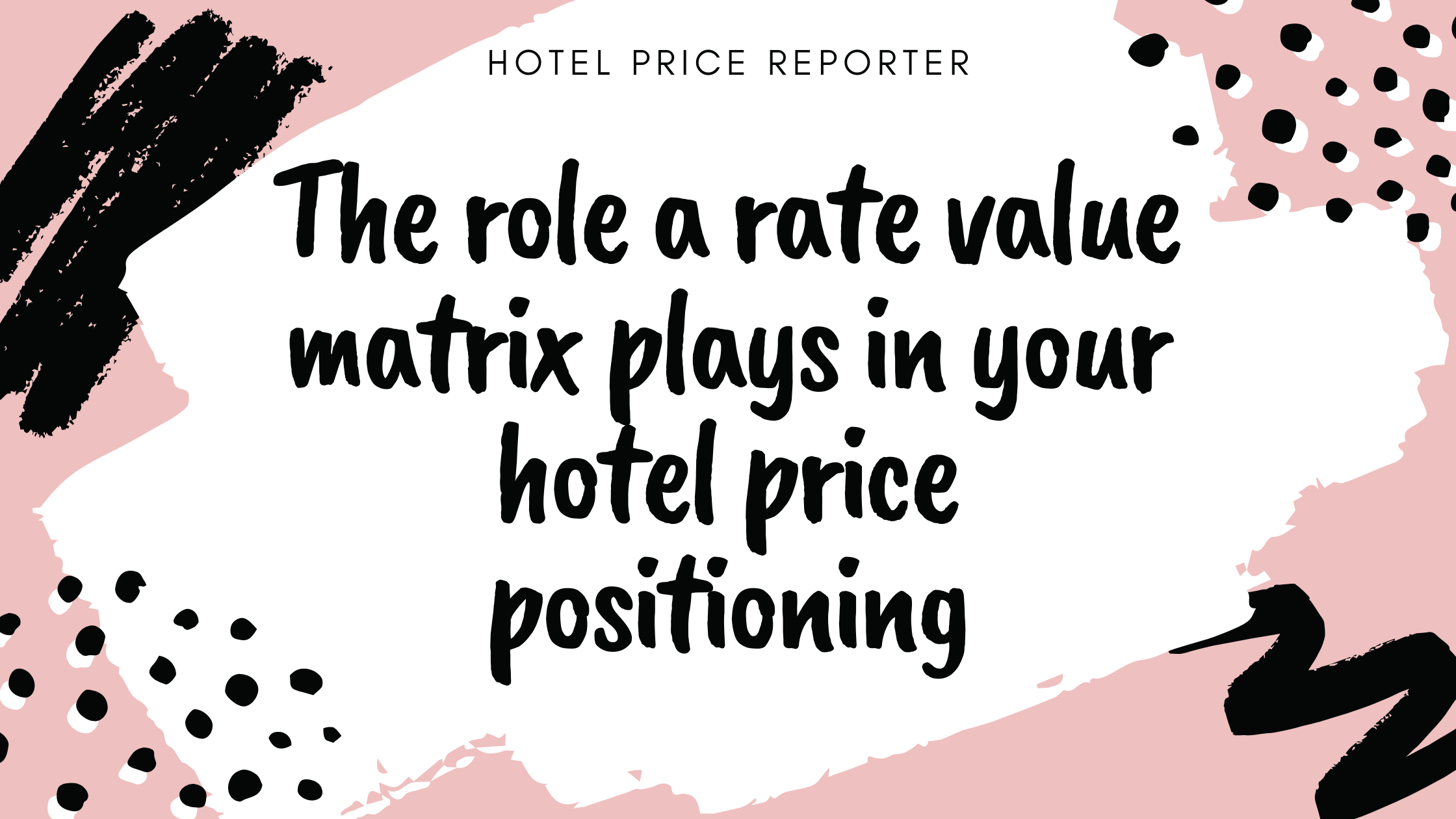
Do you want to know how to optimize your room rates with the help of a rate value matrix? You’re in the right place.
You’ve got a price in mind that you wish to try.
You may even already have narrowed down your first competitors.
Now how do you ‘optimize’ your prices so your customers can see that you offer a great value for money?
Thinking about your competitors leads into assessing your current price positioning.
Where does your hotel’s prices fall in comparison to your competitors?
Identifying the price leaders
A price leader is defined as an organization that leads the local market in price.
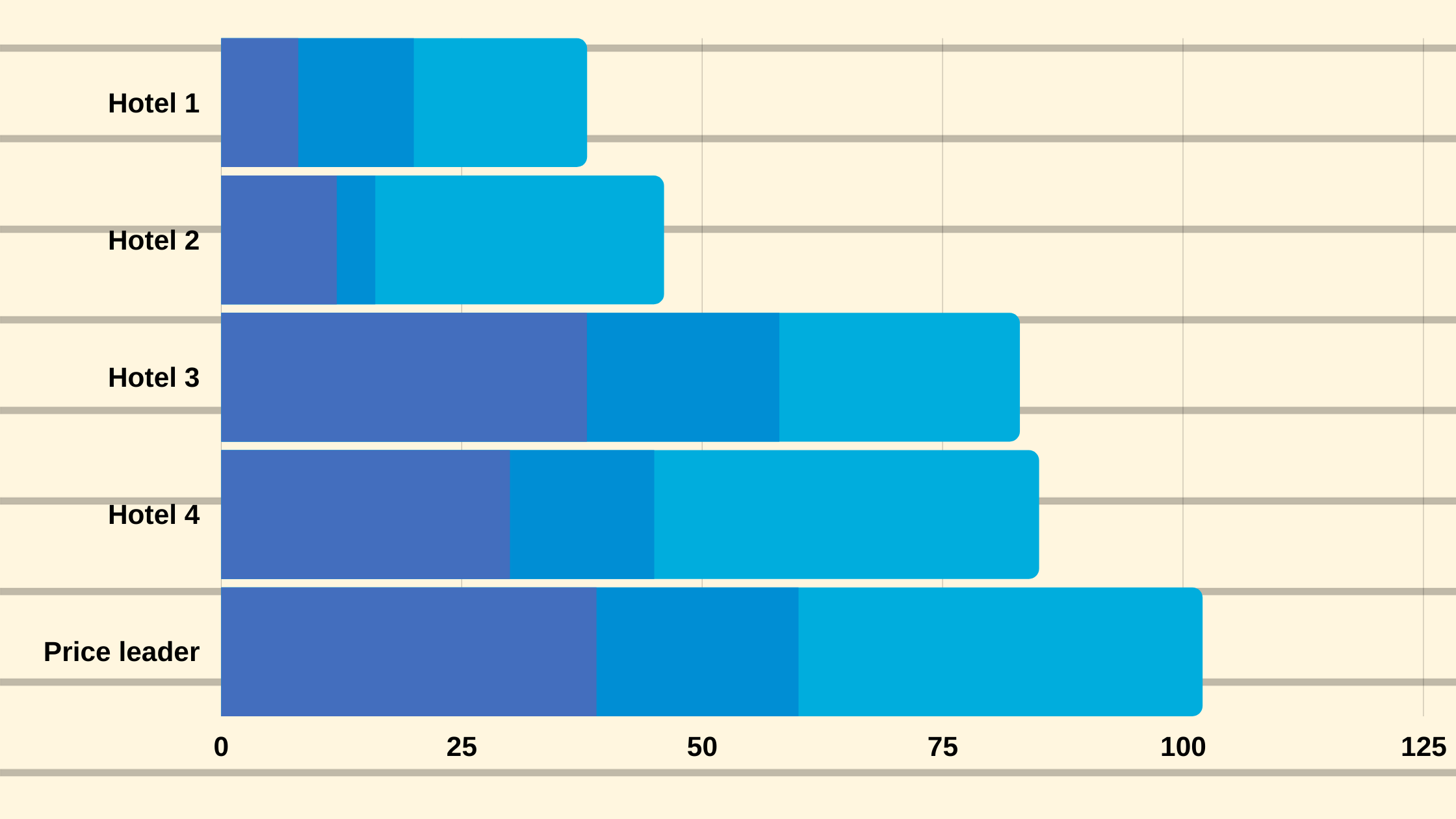
There are two types of price leaders: regular and discount:
- A regular price leader is a hotel that consistently sets the highest rates.
- A discount price leader is a hotel that is consistently setting the lowest rates.
Price leadership alone is not a goal in itself. A hotel can capitalize on its greatest strengths by making sure the appropriate price/quality is accurately perceived by the potential guests.
Building a rate value matrix
Using a rate value matrix is the best way to depict where a hotel (and all of its competitors) stand on the price-to-value scale.
We can plot a rate matrix for hotels using a Cartesian coordinate system.
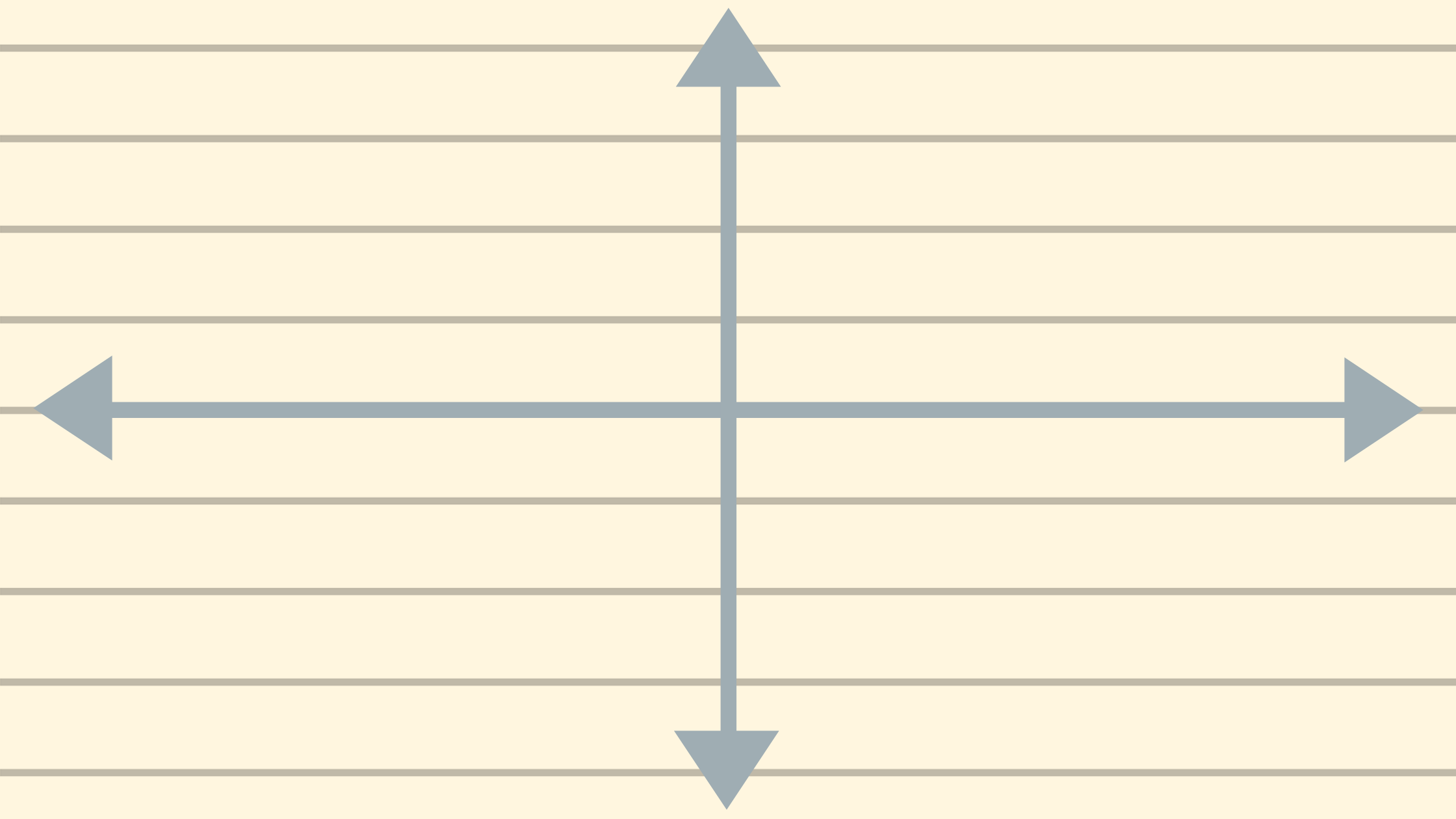
On the X axis we plot some form (or perception of) value. We know that guests value hotels differently and every effort should be taken to determine where different segments of guests value each hotel’s products and services.
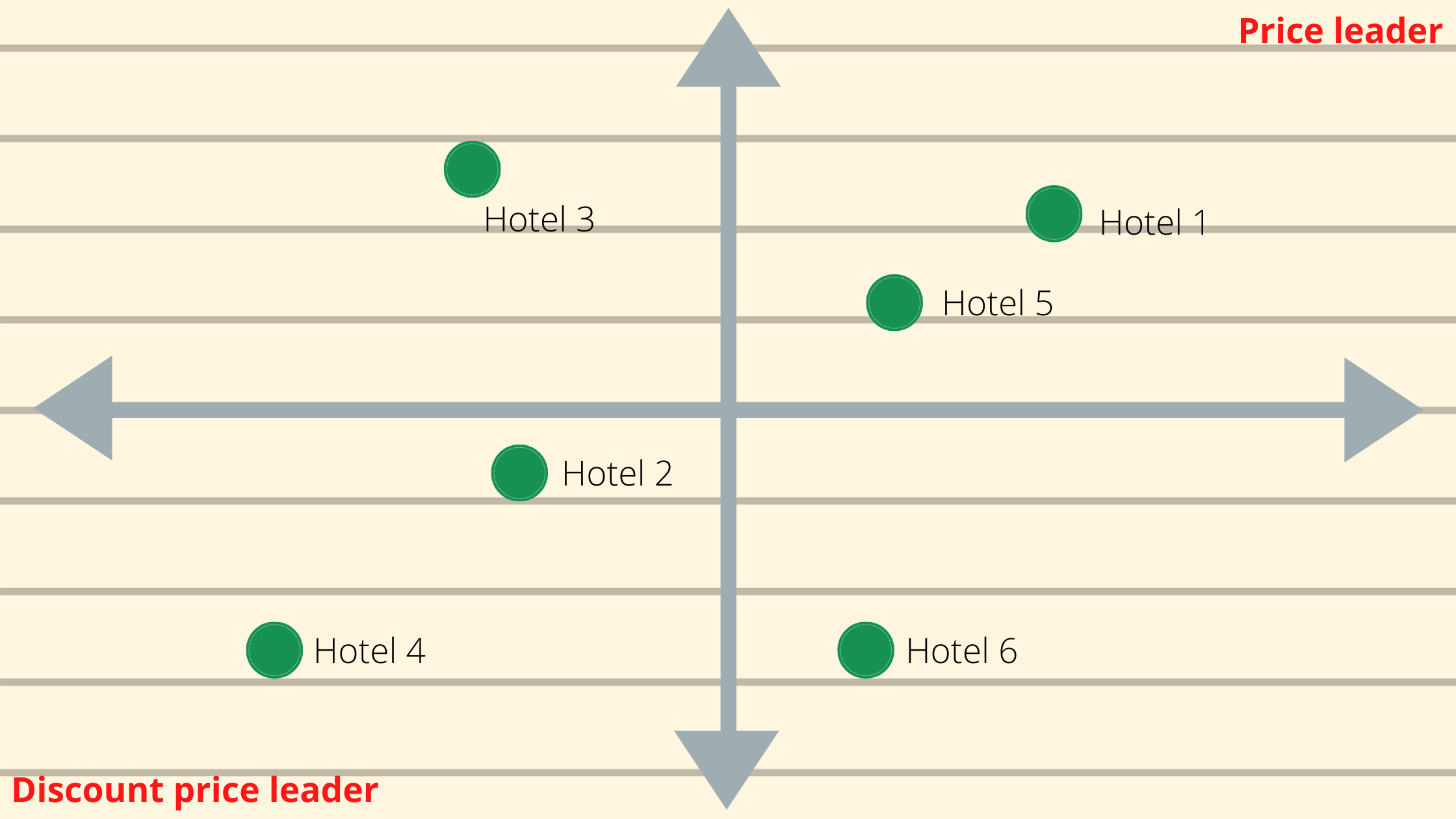
For example, one positioning map could be developed for business travelers and another one developed for leisure travelers.
N.B. The topic of value perception warrants an entire blogpost on its own, but for simplicity we’ll just use the ranking system on Booking.com with reviews from past guests.
On the Y axis we plot the room rate for every hotel. We plot this by picking a single day, but the same can be done using average daily rates.
N.B. You can download the latest prices and review rankings for your competitor set from your Hotel Price Reporter rate shopping account
Here’s a hypothetical example of what this will look like:
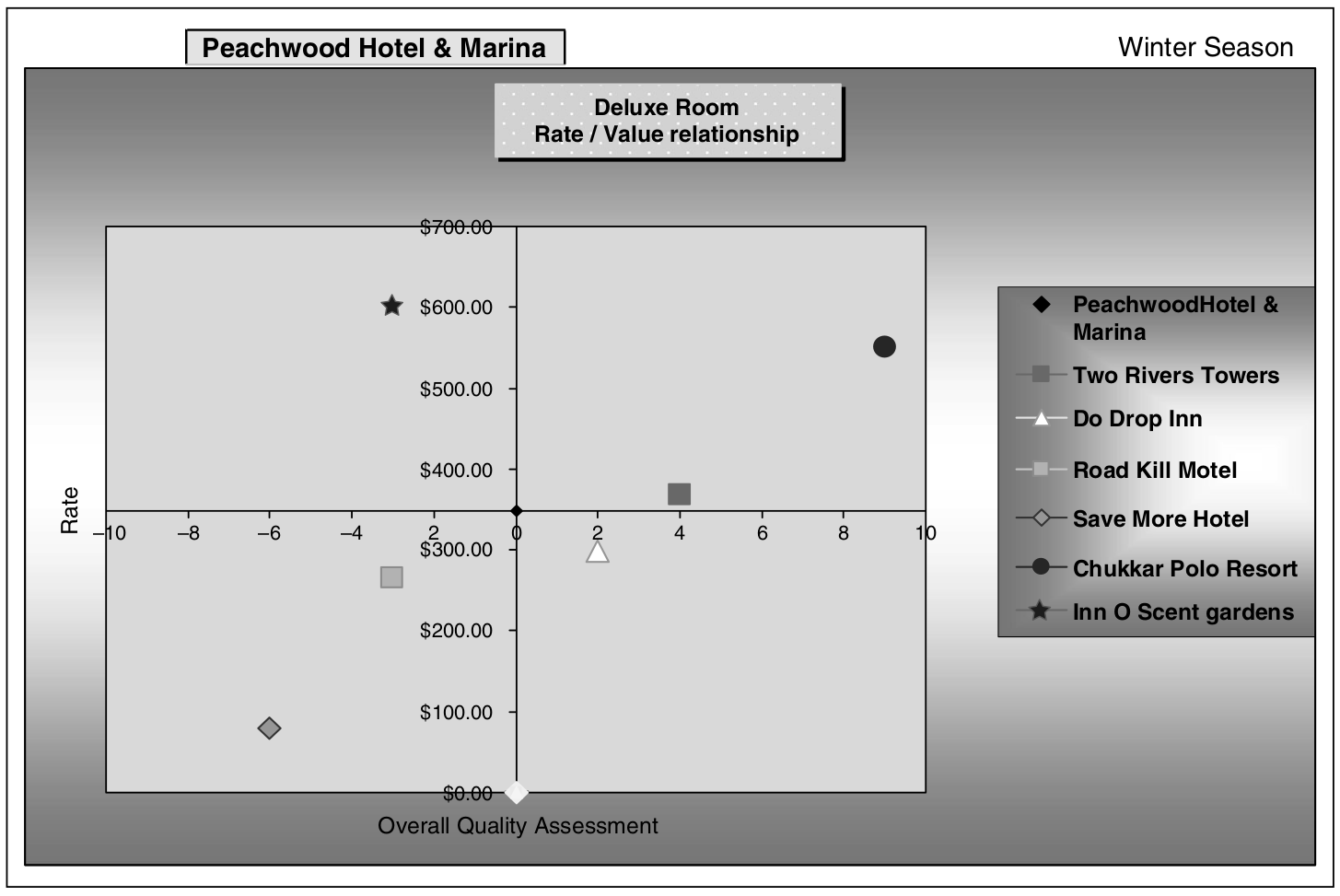
Using a rate value matrix
Development of a perceptual positioning map in the form of a rate value matrix will help your hotel to visualize where it stands in the mind of the consumer.
That position may or may not be the same with the internal perceptions you hold.
When consumer perception and internal perceptions diverge, you have two choices:
- either change the products and services your hotel offers to match the consumer perception better, or
- adjust the price to reposition yourself in the price value matrix
Modifying your rates

After a closer inspection of your price value matrix, several questions may come to mind:
- What happens if you lower your prices?
- Will guests perceive the price/value change?
- Will they reduce the value they place on your hotel?
- Or will the reduction in price get you more bookings?
- Will increased value lead to increased volume?
- Will your competitors follow suit and also reduce their rates? Will these matching discounts lead to a general devaluation of the hotel business in your area?
- Should be following a price skimming strategy positioning yourself at the top of the market?
- Or should you be following a penetration pricing strategy by positioning yourself towards the bottom and working your way up?
All too often, hotels feel pressured to keep step with their competitors when it comes to establishing price. This is a mistake!
A follow-the-leader mentality assigns too much credit to the competition. Is their strategic pricing plan so much better than yours?
It also assumes that guests are as obsessed with competitive pricing as are the competitors. Do customers really know when a competitor changes its prices? Do consumers perform price comparisons every day, every week, or every month? Or do consumers only comparison shop just before they are planning on making a purchase? Are consumers able to bypass all rate fences to access preferred rates?
These are all factors to consider when assessing competitive pricing. If your hotel has developed and implemented a well-conceived strategic pricing plan, your should have little to fear from the minor pricing fluctuations of your competitors.